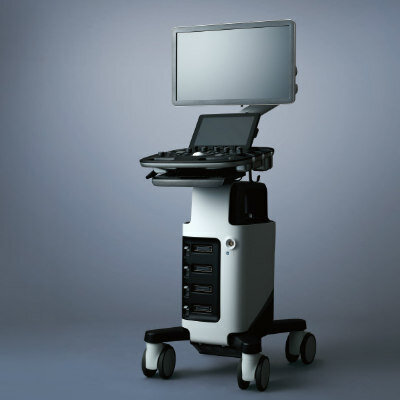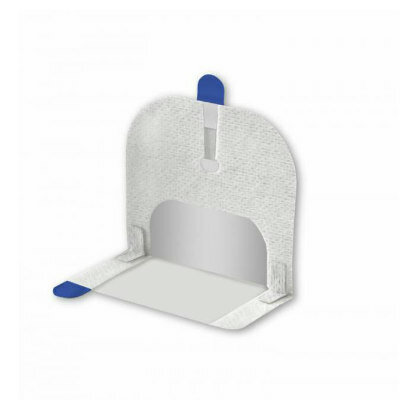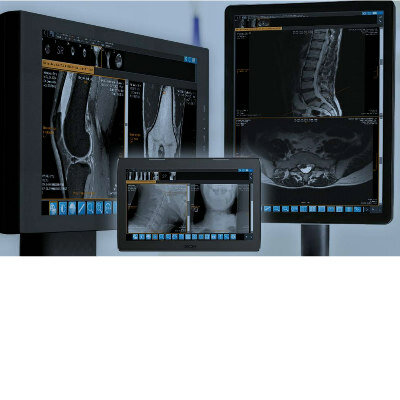Researchers Develop AI Algorithm to Predict Immunotherapy Response
|
By MedImaging International staff writers Posted on 12 Sep 2018 |
A team of French researchers have designed an algorithm and developed it to analyze Computed Tomography (CT) scan images, establishing for the first time that artificial intelligence (AI) can process medical images to extract biological and clinical information. The researchers have created a so-called radiomic signature, which defines the level of lymphocyte infiltration of a tumor and provides a predictive score for the efficacy of immunotherapy in the patient.
In the near future, this could make it possible for physicians to use imaging to identify biological phenomena in a tumor located anywhere in the body without performing a biopsy.
Currently, there are no markers, which can accurately identify patients who will respond to anti-PD-1/PD-L1 immunotherapy in a situation where only 15 to 30% of patients do respond to such treatment. The more immunologically richer the tumor environment (presence of lymphocytes), the higher is the chances of immunotherapy being effective. Hence, the researchers tried to characterize this environment using imaging and correlate this with the patients’ clinical response. In their study, the radiomic signature was captured, developed and validated genomically, histologically and clinically in 500 patients with solid tumors (all sites) from four independent cohorts.
The researchers first used a machine learning-based approach to teach the algorithm how to use relevant information extracted from CT scans of patients participating in an earlier study, which also held tumor genome data. Thus, based solely on images, the algorithm learned to predict what the genome might have revealed about the tumor immune infiltrate, in particular with respect to the presence of cytotoxic T-lymphocytes (CD8) in the tumor, thus establishing a radiomic signature.
The researchers tested and validated this signature in other cohorts, including that of TCGA (The Cancer Genome Atlas), thus demonstrating that imaging could predict a biological phenomenon, providing an estimation of the degree of immune infiltration of a tumor. Further, in order to test the signature’s applicability in a real situation and correlate it to the efficacy of immunotherapy, it was evaluated using CT scans performed before the start of treatment in patients participating in five phase I trials of anti-PD-1/PD-L1 immunotherapy. The researchers found that the patients in whom immunotherapy was effective at three and six months had higher radiomic scores as did those with better overall survival.
In their next clinical study, the researchers will assess the signature both retrospectively and prospectively, using a larger number of patients and stratifying them based on cancer type in order to refine the signature. They will also use more sophisticated automatic learning and AI algorithms to predict patient response to immunotherapy, while integrating data from imaging, molecular biology and tissue analysis. The researchers aim to identify those patients who are most likely to respond to treatment, thereby improving the efficacy/cost ratio of treatment.
In the near future, this could make it possible for physicians to use imaging to identify biological phenomena in a tumor located anywhere in the body without performing a biopsy.
Currently, there are no markers, which can accurately identify patients who will respond to anti-PD-1/PD-L1 immunotherapy in a situation where only 15 to 30% of patients do respond to such treatment. The more immunologically richer the tumor environment (presence of lymphocytes), the higher is the chances of immunotherapy being effective. Hence, the researchers tried to characterize this environment using imaging and correlate this with the patients’ clinical response. In their study, the radiomic signature was captured, developed and validated genomically, histologically and clinically in 500 patients with solid tumors (all sites) from four independent cohorts.
The researchers first used a machine learning-based approach to teach the algorithm how to use relevant information extracted from CT scans of patients participating in an earlier study, which also held tumor genome data. Thus, based solely on images, the algorithm learned to predict what the genome might have revealed about the tumor immune infiltrate, in particular with respect to the presence of cytotoxic T-lymphocytes (CD8) in the tumor, thus establishing a radiomic signature.
The researchers tested and validated this signature in other cohorts, including that of TCGA (The Cancer Genome Atlas), thus demonstrating that imaging could predict a biological phenomenon, providing an estimation of the degree of immune infiltration of a tumor. Further, in order to test the signature’s applicability in a real situation and correlate it to the efficacy of immunotherapy, it was evaluated using CT scans performed before the start of treatment in patients participating in five phase I trials of anti-PD-1/PD-L1 immunotherapy. The researchers found that the patients in whom immunotherapy was effective at three and six months had higher radiomic scores as did those with better overall survival.
In their next clinical study, the researchers will assess the signature both retrospectively and prospectively, using a larger number of patients and stratifying them based on cancer type in order to refine the signature. They will also use more sophisticated automatic learning and AI algorithms to predict patient response to immunotherapy, while integrating data from imaging, molecular biology and tissue analysis. The researchers aim to identify those patients who are most likely to respond to treatment, thereby improving the efficacy/cost ratio of treatment.
Latest Imaging IT News
- New Google Cloud Medical Imaging Suite Makes Imaging Healthcare Data More Accessible
- Global AI in Medical Diagnostics Market to Be Driven by Demand for Image Recognition in Radiology
- AI-Based Mammography Triage Software Helps Dramatically Improve Interpretation Process
- Artificial Intelligence (AI) Program Accurately Predicts Lung Cancer Risk from CT Images
- Image Management Platform Streamlines Treatment Plans
- AI-Based Technology for Ultrasound Image Analysis Receives FDA Approval
- AI Technology for Detecting Breast Cancer Receives CE Mark Approval
- Digital Pathology Software Improves Workflow Efficiency
- Patient-Centric Portal Facilitates Direct Imaging Access
- New Workstation Supports Customer-Driven Imaging Workflow
Channels
Radiography
view channel
Novel Breast Imaging System Proves As Effective As Mammography
Breast cancer remains the most frequently diagnosed cancer among women. It is projected that one in eight women will be diagnosed with breast cancer during her lifetime, and one in 42 women who turn 50... Read more
AI Assistance Improves Breast-Cancer Screening by Reducing False Positives
Radiologists typically detect one case of cancer for every 200 mammograms reviewed. However, these evaluations often result in false positives, leading to unnecessary patient recalls for additional testing,... Read moreMRI
view channel
PET/MRI Improves Diagnostic Accuracy for Prostate Cancer Patients
The Prostate Imaging Reporting and Data System (PI-RADS) is a five-point scale to assess potential prostate cancer in MR images. PI-RADS category 3 which offers an unclear suggestion of clinically significant... Read more
Next Generation MR-Guided Focused Ultrasound Ushers In Future of Incisionless Neurosurgery
Essential tremor, often called familial, idiopathic, or benign tremor, leads to uncontrollable shaking that significantly affects a person’s life. When traditional medications do not alleviate symptoms,... Read more
Two-Part MRI Scan Detects Prostate Cancer More Quickly without Compromising Diagnostic Quality
Prostate cancer ranks as the most prevalent cancer among men. Over the last decade, the introduction of MRI scans has significantly transformed the diagnosis process, marking the most substantial advancement... Read moreUltrasound
view channel
Deep Learning Advances Super-Resolution Ultrasound Imaging
Ultrasound localization microscopy (ULM) is an advanced imaging technique that offers high-resolution visualization of microvascular structures. It employs microbubbles, FDA-approved contrast agents, injected... Read more
Novel Ultrasound-Launched Targeted Nanoparticle Eliminates Biofilm and Bacterial Infection
Biofilms, formed by bacteria aggregating into dense communities for protection against harsh environmental conditions, are a significant contributor to various infectious diseases. Biofilms frequently... Read moreNuclear Medicine
view channel
New SPECT/CT Technique Could Change Imaging Practices and Increase Patient Access
The development of lead-212 (212Pb)-PSMA–based targeted alpha therapy (TAT) is garnering significant interest in treating patients with metastatic castration-resistant prostate cancer. The imaging of 212Pb,... Read moreNew Radiotheranostic System Detects and Treats Ovarian Cancer Noninvasively
Ovarian cancer is the most lethal gynecological cancer, with less than a 30% five-year survival rate for those diagnosed in late stages. Despite surgery and platinum-based chemotherapy being the standard... Read more
AI System Automatically and Reliably Detects Cardiac Amyloidosis Using Scintigraphy Imaging
Cardiac amyloidosis, a condition characterized by the buildup of abnormal protein deposits (amyloids) in the heart muscle, severely affects heart function and can lead to heart failure or death without... Read moreGeneral/Advanced Imaging
view channel
New AI Method Captures Uncertainty in Medical Images
In the field of biomedicine, segmentation is the process of annotating pixels from an important structure in medical images, such as organs or cells. Artificial Intelligence (AI) models are utilized to... Read more.jpg)
CT Coronary Angiography Reduces Need for Invasive Tests to Diagnose Coronary Artery Disease
Coronary artery disease (CAD), one of the leading causes of death worldwide, involves the narrowing of coronary arteries due to atherosclerosis, resulting in insufficient blood flow to the heart muscle.... Read more
Novel Blood Test Could Reduce Need for PET Imaging of Patients with Alzheimer’s
Alzheimer's disease (AD), a condition marked by cognitive decline and the presence of beta-amyloid (Aβ) plaques and neurofibrillary tangles in the brain, poses diagnostic challenges. Amyloid positron emission... Read more.jpg)
CT-Based Deep Learning Algorithm Accurately Differentiates Benign From Malignant Vertebral Fractures
The rise in the aging population is expected to result in a corresponding increase in the prevalence of vertebral fractures which can cause back pain or neurologic compromise, leading to impaired function... Read moreImaging IT
view channel
New Google Cloud Medical Imaging Suite Makes Imaging Healthcare Data More Accessible
Medical imaging is a critical tool used to diagnose patients, and there are billions of medical images scanned globally each year. Imaging data accounts for about 90% of all healthcare data1 and, until... Read more


















